Phytoestrogens Mimic Estrogen
Many of my patients believe that just because they bought a product from the health food store, it is good for them since it is "natural". Nothing could further from the truth. Some herbs are actually used to create miscarriages and abortions in traditional folk medicine. Many drugs that are sold under prescription by a pharmacist were the active chemicals derived from an herb obtained from folk medicine. For instance, digoxin used by mainstream medicine for congestive heart failure was originally from the foxglove plant used in an Irish tea for "dropsy." "Dropsy" was an old term for the swelling of soft tissues due to the accumulation of excess water.
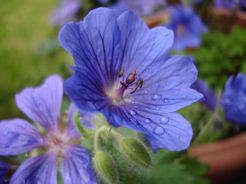 In early days, dropsy was meant to stand for the accumulation of fluid in the soft tissues. But now we describe
this as "water retention and soft tissue swelling or edema from congestive heart failure".
In early days, dropsy was meant to stand for the accumulation of fluid in the soft tissues. But now we describe
this as "water retention and soft tissue swelling or edema from congestive heart failure".
So people taking herbs from the Health Food Store that have very powerful effects, and think that they are harmless. However, these herbs can have very real effects pharmaceutical effects. Our modern pharmaceuticals are derived from these herbs.
Natural does NOT imply it is good for you. As an example, mushrooms in your yard are natural. Why not eat them? You don't eat the mushrooms in your yard because they might be poisonous.
Hormone imbalance may be provoked by some plants, foods and herbs that mimic estrogen. This is also an alternative medicine point of view that herbs can be bad for you under the wrong circumstances just as eating the wrong mushrooms are bad for you. It is not that mushrooms are bad. It is that the mushrooms even though natural could be poisonous.
Natural Progesterone Cream can also be blocked by some herbs. According to Zava, PhD herbs used for hormonal manipulation are either estrogen stimulating, estrogen blocking, or progesterone blocking. Very few herbs are progesterone stimulating. I only know of two herbs that are progesterone stimulating. One herb is Maca used by the Peruvians for thousands of years as a fertility herb. The other herb is a Chinese herb that mimics progesterone. Chaste Berry is a LH analog that stimulates the corpus luteum to produce progesterone. It is NOT progesterone. Therefore, if the woman is older than 35 years old and usually has anovulatory menstrual cycles, then Chaste Berry will not work in this case.
I had a patient with excellent intentions to purchase "healthy products" from a health food store. She began to complain of sore tender breasts. Sore tender breasts and swelling and weight gain just before the period are the sure signs of a hormone imbalance. She hadn't even taken natural progesterone cream. She figured out when talking to me that the sore and tender breasts started when she started using an expensive shampoo from the health food store. The health food store shampoo contained pomegranate. Pomegranate was used as a traditional folk medicine to create a miscarriage in prebiblical times. Anything that creates a miscarriage is ANTI-progesterone. "Pro" means for. "Gesterone" means gestation. So progesterone means "for gestation". Progesterone levels start at 60 mg/day at the beginning of pregnancy, and end at 400 mg/day during the third trimester of pregnancy. You must have adequate amounts of natural bioidentical progesterone to maintain the pregnancy. If you don't have enough progesterone to maintain the pregnancy, or you are taking a chemical that blocks progesterone, then you will have a miscarriage. Anything that is ANTI-Progesterone will block progesterone. Any herb that is an abortifacient or prevents conception may be a progesterone blocker. Progesterone counter balances estrogen. Block progesterone and you become estrogen dominant.
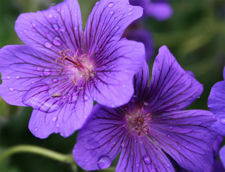 In yet another anecdotal story, I had another patient with severe endometriosis.
She noticed that her endometriosis worsened when she drank a lot of pomegranate juice
and pomegranates. She was tempted to eat pomegranates and drink pomegranate juice by a health food store special sale on pomegranates.
In yet another anecdotal story, I had another patient with severe endometriosis.
She noticed that her endometriosis worsened when she drank a lot of pomegranate juice
and pomegranates. She was tempted to eat pomegranates and drink pomegranate juice by a health food store special sale on pomegranates.
As you know, breast enhancement enlargement formulas seen on infomercials on late night television, rely on the estrogen like activity of the herbs in their formula. These same breast enlargement herbs may cause hormone imbalance. There are roughly 300 folk medicine herbal formulations in Europe, 200 of which are topical. What do think is in those breast enlargement formulas? What could be making the breasts bigger? Breasts are made bigger by plant estrogens.
Don't Use Bad Phytoestrogens (Plant Estrogens)
Plants produce chemicals that mimic estrogen and/or block estrogen, and/or block progesterone. Only 2 herbs that I know of mimic progesterone. One of these herbs is maca. The other is a Chinese herb that I cannot remember. These chemicals are known as phytoestrogens. "Phyto" means plant. So phytoestrogens means "plant estrogens".
The human body has receptor for estrogen and a receptor for progesterone. The receptor is like a baseball glove. The receptor "catches" estrogen. And a different receptor "catches" progesterone. These receptors will "catch" not only to the body's own hormones, but also plant hormones. Once the receptor "catches" the plant hormone, then the phytoestrogen may either stimulate the receptor, block the receptor, stimulate weakly the receptor, or stimulate the receptor in some strange manner. In general, phytoestrogens are thought to come out of the human body in several days to weeks. In contrast, synthetic chemicals that mimic estrogen (xenoestrogens) may take months to decades to be out of the human body. Whole grains, fruits, seeds, beans and herbs are known to have estrogen and/or progesterone activity. The most famous is soy. If the estrogen is weak or a blocker then this may actually help the breast cyst. However, if the phytoestrogen is strong such as pomegranate, this will make the breast cyst worse.
Over 3000 years ago, a Chinese emperor wrote that soy was poisonous. Soy is in its raw form has anti-nutritive properties. If you give raw soy to pigs, the pigs expire. So the pig rancher cook the soy bean for 45 minutes and THEN give the soy to the pigs.
In Chinese History, a hungry fellow likely found that fermenting soy counteracted the anti-nutritive effects of soy. So tofu is traditionally fermented soy. Tofu seems to be safe and is eaten by more than a billion people in China and Japan for thousands of years. However, modern soy powder is NOT fermented and some of the anti-nutritive effects and hormonal effects are still there. Soy formula is so controversial among pediatricians. Fermented soy is credited with the small incidence of breast cancer in China and Japan. The breast cancer incidence rate in women is 20 times less in China and Japan than America.
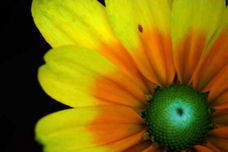 Scientists think that fermented soy that has weak phytoestrogens may block more harmful xenoestrogens.
Rats fed soy powder (not fermented soy) developed smaller nipples. The smaller rat nipple size
builds a case for the soy weak phytoestrogen effect.
Scientists think that fermented soy that has weak phytoestrogens may block more harmful xenoestrogens.
Rats fed soy powder (not fermented soy) developed smaller nipples. The smaller rat nipple size
builds a case for the soy weak phytoestrogen effect.
I personally think that women born in China fed on a traditional diet typically have small breasts. However, these same Chinese women born and raised in America fed an American diet seem to have large breasts, and have a breast cancer incidence rate approaching that of an American woman.
Possibly, if the people group is relatively free from breast caner, and the food that has been eaten by a culture or people group for centuries, then the food is probably fine to consume. In the phytoestrogen world, people think that a "weak" estrogen may protect against breast cancer causing xenoestrogens. Lilian Thompson PhD showed that 1 ounce of oral ground flax seed made breast cancer tumor size between the time of diagnosis and surgery shrink. The flax seed estrogen binds to the estrogen receptor, but does not stimulate it. The flax seed phytoestrogen competes with other estrogens that would otherwise stimulate the estrogen receptor. The flax seed phytoestrogen acts as an estrogen blocker. In the opposite example, a strong phytoestrogen red clover may actually make the disease worse. I personally, don't like to recommend flax. I had two patient that bled profusely on flax. One patient bled for 9 months and had to be transfused with blood in the Emergency Room. Another had mid cycle spotting with eggs high in omega-3 oils from chickens fed with flax seeds.
"Pro" means for. "Gesterone" means gestation. "Progesterone" means "for gestation". Natural Progesterone is the hormone of pregnancy and this hormone goes up during pregnancy. Progesterone opposes estrogen. Anything that creates a miscarriage is ANTI-progesterone and blocks progesterone from going into the progesterone receptor.
Miscarriages may be created by many herbs in European folk medicine. These herbs are categorized as abortifacients, but will also cause estrogen dominance. You should not take these herbs classified as abortifacients. Abortifacients are most likely to be like the "morning after" pill otherwise known as RU-486. RU-486 fits into the progesterone receptor, but does not stimulate it. RU-486 is a progesterone blocker.
Coffee
Coffee is a known phytoestrogen that makes my patients with breast cysts worse. Even decaffeinated coffee makes premenstrual bloating and breast tenderness worse. The caffeine may also keep the liver busy so that it cannot excrete estradiol and other xenoestrogens. One Bringham Young University study showed that 2 cups of coffee per day would increase estradiol by 70 percent.
So Coffee makes breast cysts worse in two ways. 1) Increased estradiol through the liver being tied up (the liver is metabolizing the caffeine and is too busy to work on the estradiol). 2) Plant hormones (xanthines) in the coffee that mimic estrogen (phytoestrogens), and cause estrogen dominance.
Clover, Red Clover tea, Alfalfa Sprouts
In the 1940's, the sheep ranchers in Perth, Australia had a plethora of still births contrary to three seasons
of good weather for ranching sheep. The merino sheep seemed to be healthy.
But, the female sheep did NOT go into labor; the 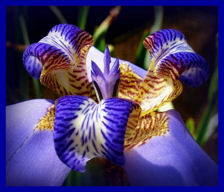 baby lambs died in still birth.
The ewe's sometimes died as well. Within 5 years, the ewe's
did not even conceive even after repeated breeding with fertile rams.
baby lambs died in still birth.
The ewe's sometimes died as well. Within 5 years, the ewe's
did not even conceive even after repeated breeding with fertile rams.
Federal and agricultural specialists found the problem. The problem was clover. Fifteen years earlier, ranchers brought a particular clover from the Mediterranean region in Europe. The first scientific paper on this, "clover disease" is found in the Australian Veterinary Journal in 1946. Three years later three chemicals were suspect. Finally, formononetin, only one of the chemicals, was implicated. Formononetin mimics estrogen.
Sunflower Seeds (this includes getting rid of sunflower oil and getting rid of safflower oil (botanical family same))
Sunflower seeds contain coumestrol. Sunflower seeds given to the mother rat effected permanent reproductive problems in the rat pups. Female rat pups whose mother was given low doses of coumestrol, after being fully grown, did not ovulate. Male rat pups whose mother was given low doses of coumestrol had altered mounting behavior and fewer ejaculations. Maybe patients with hormone imbalance should not take sunflower and safflower.
Sunflower oil and Safflower oil probably has active hormone components in it. Until we know more, Sunflower oil and Safflower oil should be avoided not be used. Safflower is in the same botanical family as Sunflower. To read more about this experiment click here. This is from "Our Stolen Future" by Theo Colborn.
Queen Anne's lace (wild carrot)
From the fourth century B.C., Hippocrates wrote that Queen Anne's Lace stopped pregnancies. In 2007, Robin Bennett, an
herbalist, gave 13 women Queen Anne's Lace and claimed to have a 98% success in preventing pregnancy. Historical accounts
also show an abortifacient role. It is
likely that it is a progesterone-blocker. There are no University or industry studies because
there is no money to be made. Here is a link to her study.
Seeds harvested in the fall if taken after coitus show a strong contraceptive effect. Extracts of seeds have
been tested on rats, mice, guinea pigs, and rabbits. The implantation process is disrupted, and a fertilized ovum will not
implant or not implant well.
Pomegranate
The Greeks used this plant as a contraceptive. Modern research confirms strong estrogen activity. It is still used in India, East Africa, and the Pacific as a contraceptive. Female rats fed pomegranate seed and paired with male rats had a 72% reduction in fertility. Guinea Pigs fed pomegranate seeds had a 100% reduction in fertility. (This is from the Encyclopedia of Birth Control by Vern Bullough).To read more about the historical basis of the use of pomegranate click here. This is from Encyclopedia of Birth Control by Vern Bullough.
Fennel
Used in the ancient world to prevent pregnancy and to create abortions. John Riddle researched the
ancient use of silphium (a species of giant fennel) which was widely used as a contraceptive in the
ancient Greek world and the Near East. It was so popular, that over harvesting caused its
price to rise and by the first century of the modern era it was described as worth its
weight in silver. One difficulty, is that it grew in a thirty mile band along the dry mountainside
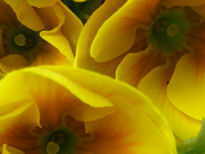 facing the Mediterranean sea. Attempts to cultivate it commercially failed and by late
antiquity silphium had become extinct. Silphium had a widespread reputation of being
a contraceptive and abortifacient. The standard prescription was for a woman to drink
the juice from a small amount of silphium, about the size of a chickpea, with water once
a month. Other forms of Ferula such as astafeda (Ferula assafoetida) and Ferula orientalis
were also tested in the laboratory and shown to prevent implantation of a fertilized ova.
These two fennels were not prized by the ancients. Fennel is likely a progesterone
blocker. (This information is quoted from Encyclopedia of Birth Control by Vern Bullough).
facing the Mediterranean sea. Attempts to cultivate it commercially failed and by late
antiquity silphium had become extinct. Silphium had a widespread reputation of being
a contraceptive and abortifacient. The standard prescription was for a woman to drink
the juice from a small amount of silphium, about the size of a chickpea, with water once
a month. Other forms of Ferula such as astafeda (Ferula assafoetida) and Ferula orientalis
were also tested in the laboratory and shown to prevent implantation of a fertilized ova.
These two fennels were not prized by the ancients. Fennel is likely a progesterone
blocker. (This information is quoted from Encyclopedia of Birth Control by Vern Bullough).
(This information below is quoted from Encyclopedia of Birth Control by Vern Bullough).
Aloe
Aloe has been used as both a contraceptive and for its abortive effect. An alcohol extract can be used to prevent implantation.
Artemisia
Artemisia was the plant of the goddess Artemis, the goddess of the forest, hills, childbirth, and fertility. Artemisia is an effective antifertility agent. In 1979, 10 mg of scoparone, a derivative of Artemisia scopario, was fed to rats on days one to seven days after coitus; the result was 100 percent termination of pregnancy.
Asarum
Asarum (Asarum europaeum) is closely related to birthwort and has a similar hormonal qualities. Asarum canadense is a contraceptive made from boiling its roots. It is mentioned in Greek writings and medieval writings. It is regarded as a way of inducing menstruation.
Birthwort
Birthwort (Aristolochia) was used by ancient Egypt to ease a difficult childbirth,
but also as a contraceptive and abortion.
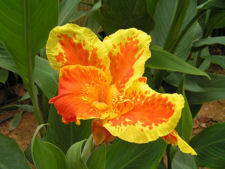 Aristolochia acid from Aristolochia is found to be 100 percent effect in blocking
pregnancy after a single oral dose on day 6 or 7 after coitus with little side
effects. Stronger doses interrupted midterm pregnancies. Birthwort is used to
expel dead fetuses.
Aristolochia acid from Aristolochia is found to be 100 percent effect in blocking
pregnancy after a single oral dose on day 6 or 7 after coitus with little side
effects. Stronger doses interrupted midterm pregnancies. Birthwort is used to
expel dead fetuses.
Celery
Celery was used as an oral contraceptive in Egypt and in medieval Europe, India, and Africa. Celery seed is not an effective contraceptive unless dosed in high amounts.
Chaste Tree (Vitex agnus-castus)
Many patients use Chaste Berry for estrogen dominant diseases such as breast cysts. It is said to increase LH, and therefore increase the production of Progesterone. However, the Greek athletic trainers required their men to sleep on chaste tree twigs to prevent an erection. Seeds of the chaste berry can cause abortion if take early in the pregnancy, but not as effective later on.
Dittany (Dictammus albus)
Belonging to the mint family, Greeks and Romans used this herb to expel a dead fetus. It also has contraceptive and abortive effects. About 3 grams of Dittany seeds were given to terminate a pregnancy in the third month.
Ferns
The pharmaceutical writings of the ancient world frequently mention ferns as contraceptives and abortifacients. Linaeus (Capillas veneris), the hair or love, is an active inhibitor of egg implantation after coitus. China, Hungary, New Guinea, and medieval Europe also used ferns as contraceptives and abortifacients.
Juniper (Juniperus communis or Juniperus sabina)
Juniper was used in ancient sources and medieval sources as a contraceptive and
abortifacient. It was rubbed on the penis before intercourse or taken orally.
 It is one of the best documented contraceptives. However, it is has mild side
effects. Cypress (Cypress incompleteus) is closely related to the juniper botanically
and is regarded as a menstrual regulator and an abortifacient. Peru, Paraguay,
and medieval Europe used Cypress. Cypress in addition to likely progesterone
blocking qualities has estrogenic activity as well.
It is one of the best documented contraceptives. However, it is has mild side
effects. Cypress (Cypress incompleteus) is closely related to the juniper botanically
and is regarded as a menstrual regulator and an abortifacient. Peru, Paraguay,
and medieval Europe used Cypress. Cypress in addition to likely progesterone
blocking qualities has estrogenic activity as well.
Mint (Mentha)
Mint has a number of varieties with antifertility qualities. Pennyroyal, sage, marjoram,
thyme, rosemary, and hyssop inhibit gonadotrophic or prolactin secretion and were used
as an early abortifacients or contraceptives.
Pennyroyal (Mentha pulegium), a member of the mint family is taken as a tea
and acts as an abortifacient. A number of modern animal and human studies have found that
Pennyroyal contains pulegone, that terminates pregnancies taken in controlled amounts. If
taken in large amounts it becomes toxic to the liver. There is some evidence that it may
have killed the mother as well as the fetus.
Myrrh (Commiphora)
Myrrh was recognized as an antifertility drug in the ancient world and abortifacient.
Rue (Ruta graveolens)
Rue has an unpleasant odor and a disagreeable taste and can cause an abortion. Extracts given to female rats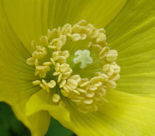 reduced number of pregnancies from 20 to 75 percent depending on the potency
of the extract administered. The active ingredient, dubbed chalepensin, is toxic in high dose.
Other membersof rue that include Murraya paniculata var., M. sapientum have the same effect or more of an effect.
reduced number of pregnancies from 20 to 75 percent depending on the potency
of the extract administered. The active ingredient, dubbed chalepensin, is toxic in high dose.
Other membersof rue that include Murraya paniculata var., M. sapientum have the same effect or more of an effect.
Squirting cucumber (Ecballum elaterium)
Squirting cucumber was used by Hippocrates as an abortifacient. Modern test indicate extracts of the plant prevent ovulation. Squirting cucumber was not used in Europe because the plant did not grow there.
Willow (Salicacceae)
Willow (Salicacceae family) bark and leaves are mixed with honey to lessen the bitterness and to prevent pregnancy or create an abortion. The tree contains trihydroxyestrin that is similar to perhaps a female hormone that interfere with ovulation and implantation. Willows are in the same botanical family as Poplar (populus alba) and some older sources mention poplar as also having contraceptive abilities.
Licorice, Red Clover, Yucca, Hops (Beer) and Motherwort
Beer can exacerbate breast cysts. Zava, PhD showed that these herbs stimulated estrogen receptor positive breast cancer cells to grow. Red Clover and Yucca were found to be equal in potency to estradiol at the same concentrations. Women who harvest hops for beer begin menstruating 2 days later anecdotally. Zava has confirmed that beer has a significant amount of phytoestrogens that have moderate estrogen activity from hops used in the flavoring of beer.
This is why beer swilling men can have small penises, large beer bellies, and gynecomastia (man-boobs - male breast enlargement). The estrogenic effect of beer creates this problem. Anything that creates gynecomastia (man-boobs) is estrogenic.
Other Herbs that may exacerbate Breast cysts
Zava, PhD also identifies Bloodroot, Ocotillo, Mandrake, Oregano, Damiana, Pennyroyal, Verbenna, Nutmeg, Tumeric, Yucca, Thyme, Calamus rt., Red Clover, Goldenseal, Licorice, Mistletoe, Cumin, Fennel, Camomille, Cloves as having strong estrogenic effects.
 There are separate estrogen and progesterone receptors. Zava, PhD was able to show that the above herbs are able to bind to the progesterone receptor. These herbs would compete against any natural progesterone taken and should also be avoided. Interestingly enough all the progesterone binding herbs were antagonists or neutral meaning they competed against progesterone and worked against it or blocked progesterone. None of them were progesterone stimulators. Bloodroot, mandrake, pennyroyal, yucca, and mistletoe all have very strong progesterone binding activity and are used as abortifacents (create an abortion), and to bring on menses. Bloodroot was used in England to treat breast cancer 100 years ago, and was used by Native Americans to treat surface tumors. Herbalists today use it to treat breast cancers, nasal polyps, and cervical dysplasia. Mistletoe has been used for 100 years in Europe to treat breast cancer and leukemia.
There are separate estrogen and progesterone receptors. Zava, PhD was able to show that the above herbs are able to bind to the progesterone receptor. These herbs would compete against any natural progesterone taken and should also be avoided. Interestingly enough all the progesterone binding herbs were antagonists or neutral meaning they competed against progesterone and worked against it or blocked progesterone. None of them were progesterone stimulators. Bloodroot, mandrake, pennyroyal, yucca, and mistletoe all have very strong progesterone binding activity and are used as abortifacents (create an abortion), and to bring on menses. Bloodroot was used in England to treat breast cancer 100 years ago, and was used by Native Americans to treat surface tumors. Herbalists today use it to treat breast cancers, nasal polyps, and cervical dysplasia. Mistletoe has been used for 100 years in Europe to treat breast cancer and leukemia.
Herbs that Suppress Breast Cancer Cell Growth
Zava, PhD also found that Mandrake, Bloodroot, and Juniper stunted the growth of BOTH estrogen receptor positive breast cancer cells and estrogen receptor negative breast cancer cells. Saliva estradiol results also showed very low estradiol in women taking the Chinese herb Dong Quai. It is thought that Dong Quai suppresses estradiol synthesis - mechanism is not known.
Cotton Seed Oil
Since the 1970s most of the work on cottonseed oil as an antispermatogenic has been conducted in China, after Chinese authorities noted decreased fertility in some provinces in the late 1950s and eventually linked it with the use of cottonseed oil in cooking. In one study rats fed 0.5 milliliters of cottonseed oil a day produced no viable sperm at the end of the 28-day test period. Cotton is the most intensively sprayed field crop in the world, accounting for more than 10 percent of the pesticides used worldwide and 25 percent of the pesticides used in the U.S. Yet despite cotton's role in the food chain, chemicals that are banned for use on food crops are used on cotton.
Tea Tree oil (Melaleuca alternifolia) and Lavender Oil causes Gynecomastia (male breast enlargement) in boys
From Science News, issue of 1 July 2006
Two ingredients common in many hair- and skin-care products have been linked to abnormal development of breasts in boys. Lavender oil and tea tree oil contain compounds that act like female sex hormones and interfere with male hormones, researchers have determined.
Enlarged male breasts, or gynecomastia, result from an imbalance between the activity of estrogens, which stimulate breast growth, and estrogen-inhibiting androgens. The condition is extremely rare before puberty, says Denver-area pediatric endocrinologist Clifford Bloch.
Nevertheless, since the mid-1990s, Bloch has treated gynecomastia in a series of boys age 10 or younger. Most had normal ratios of sex hormones in their blood, indicating that theirs wasn't a problem of hormone production.
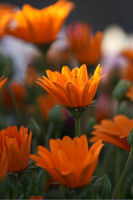 From the youngsters and their parents, Bloch learned that at least five boys had been using a shampoo, hair gel, soap, or another topical product that listed lavender oil among its ingredients. One of the products also contained tea tree oil. "A couple of patients were putting pure lavender oil on their skin," he says.
From the youngsters and their parents, Bloch learned that at least five boys had been using a shampoo, hair gel, soap, or another topical product that listed lavender oil among its ingredients. One of the products also contained tea tree oil. "A couple of patients were putting pure lavender oil on their skin," he says.
Bloch recommended that the boys stop using lavender-containing products. When they followed his advice, gynecomastia disappeared within a few months.
To verify his hunch that the plant oils were hormonally active, Bloch contacted Derek Henley and Kenneth Korach of the National Institute of Environmental Health Sciences in Research Triangle Park, N.C. In their lab, the two investigators exposed human-breast cells to lavender oil and, separately, to tea tree oil. They found that each oil turned on estrogen-regulated genes and inhibited an androgen-regulated gene.
"These oils possess both estrogenic and anti-androgenic properties," Henley reported at the Endocrine Society meeting in Boston this week. He adds that the finding is the first to implicate "essential oils" from plants in gynecomastia.
Young boys should avoid the oils, Bloch advises. Many personal-care products contain them. Other plant products act like estrogens in the body.
Pediatric endocrinologist Edward Reiter of Tufts University School of Medicine in Springfield, Mass., applauds Bloch for his "impressive, Sherlock Holmes" performance in unearthing what the boys had in common. While similar patients probably trickle in to other endocrinology clinics, he says, the cause of their enlarged breasts could escape diagnosis because doctors don't make the connection to personal-care products.
"If I had seen [just] one of those kids, I'm sure I would have missed it," he says.
The rapid reversal of gynecomastia that Bloch accomplished is a rare achievement in medicine, comments Ken Ong, a pediatric endocrinologist at the Medical Research Council in Cambridge, England. As such, it strongly suggested a link between the products and the boys' problem.
The plant essences presumably have similar potential effects in young girls, Reiter says. Studies show a recent rise of early breast development in girls. Prepubertal children have low sex hormone concentrations, so relatively small amounts of hormone-mimicking compounds might upset their physiologic balance at that age, says Reiter.
Yes, the common lavender herb and tea tree oil used in many health food store soaps and shampoos is causing breast cysts.
Conclusion
Just because you buy something at the health food store and it is natural does not mean it is good for you. Many plants exhibit hormone properties. Typically, plants are estrogen mimics, progesterone blockers, or estrogen blockers. Very few plants are progesterone stimulating. As a result, most hormone active plants will cause estrogen dominance.